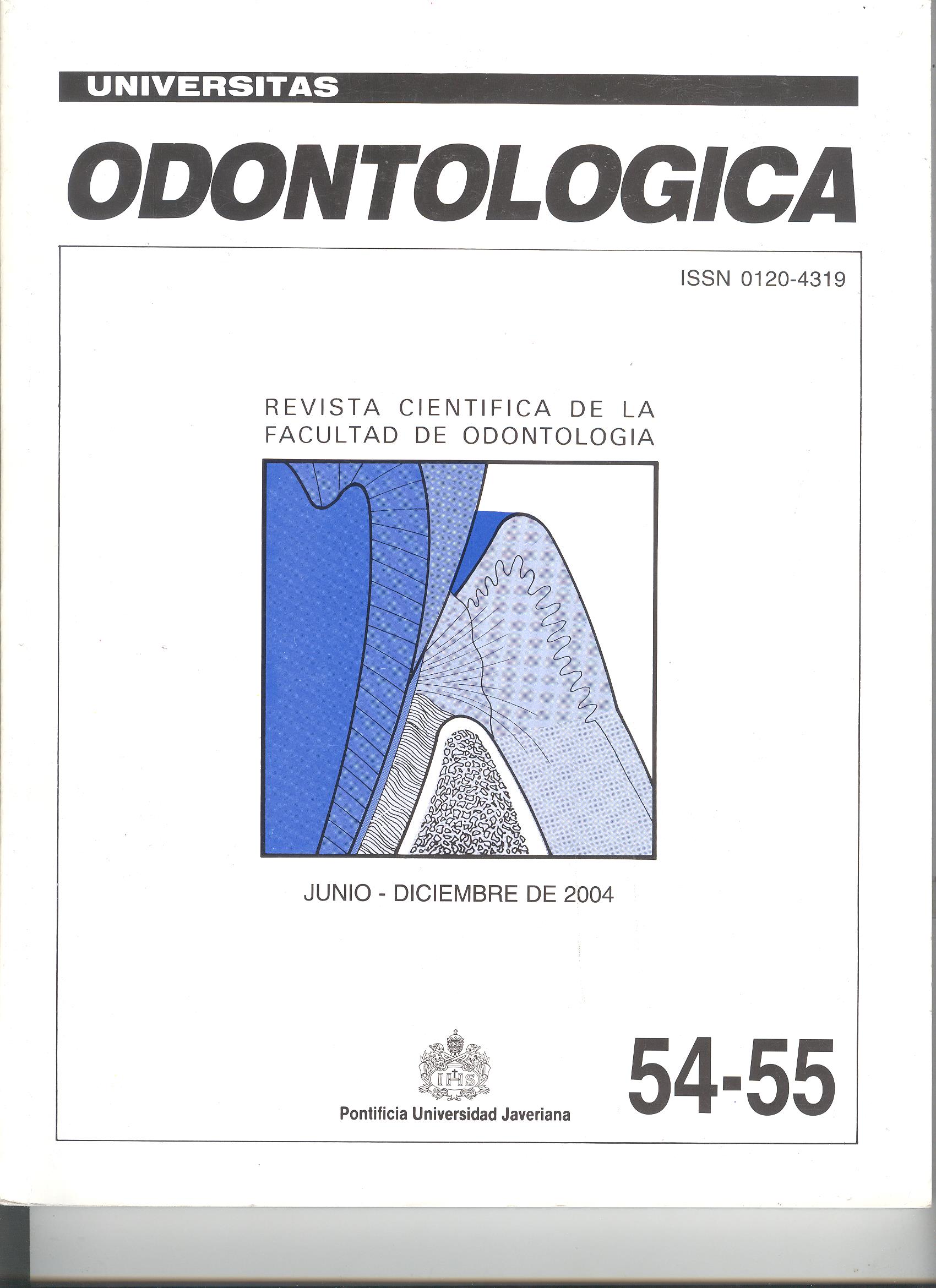Resumen
ANTECEDENTES: la queilitis angular, también definida como candidiasis por predisposición, es conocida como una colonización micótica en las comisuras labiales, debido a pliegues profundos o erosiones epidémicas; suele tener carácter bilateral, no sangra y se limita al bermellón y a la superficie cutánea. Se reporta una relación con la presencia de microorganismos como Staphylococcus aureus y Candida albicans, además de su posible asociación con la disminución de dimensión vertical, la cual puede ser un factor coadyuvante para el desarrollo de esta patología. OBJETIVO: identificar si existe sobreinfección con Candida spp y Staphylococcus aureus en pacientes con queilitis angular, con o sin pérdida de dimensión vertical. MÉTODO: se realizó caracterización microscópica y bioquímica de las muestras tomadas a treinta pacientes adultos con signos clínicos de queilitis angular, quince con pérdida de dimensión vertical y quince sin pérdida. RESULTADOS: se encontraron 4 tipos de microorganismos asociados a queilitis angular: Staphylococcus epidermidis, Staphylococcus aureus, Candida Spp y Estreptococo, en orden descendente respecto de los porcentajes encontrados. En la mayoría de los pacientes se encontró un solo microorganismo. CONCLUSIONES: A partir de estos resultados, se puede considerar que la queilitis angular no podría ser definida como una candidiasis atrófica en forma exclusiva, ya que la presencia de otros microorganismos indica una etiología multifactorial.
Wood NK, Goaz PW. Diagnóstico diferencial de las lesiones orales y maxilofaciales, 5a ed. México DF, México: Harcourt Brace, 1998; 526
Wright DM. Introducción a la microbiología médica. Buenos Aires, Argentina: Pretice-Hall Hispanoamericana, 1985; 209
Sencherman G, Echeverri E. Neurofisiología de la oclusión, 2a ed. Bogotá, D. C., Colombia: Monserrate, 1995; 228
Regezi D, Sciubba J. Patología Bucal. 2a. ed. México DF, México: McGraw-Hill Interamericana, 1995; 140.
Geneser F. Histología, 2a ed. Buenos Aires, Argentina: Panamericana, 1994; 381
Ohman SC, Jontell M. Treatment of angular cheilitis. The significance of microbial analysis, antimicrobial treatment, and interfering factors. Acta Odontol Scand 1988 Oct; 46(5): 267-72
Warnakulasuriya KA, Samaranayake LP, Peiris JS. Angular cheilitis in a group of Sri Lankan adults: a clinical and microbiologic study. J Oral Pathol Med 1991 Apr; 20(4): 172-5
Liébana J. Microbiología oral. 5a. ed. Buenos Aires, Argentina: McGraw-Hill Interamericana, 1997; 370
Ohman SC, Osterberg T, Dahlen G, Landahl S. The prevalence of Staphylococcus aureus, Enterobacteriaceae species, and Candida species and their relation to oral mucosal lesions in a group of 79-year-olds in Goteborg. Acta Odontol Scand 1995 Feb; 53(1): 49-54
Niserngard RJ, Newman MG. Oral microbiology and immunology, 2nd Ed. New York, NY, USA: Panamericana, 1996; 70
Tyldesley WR. Tyldesley’s Oral Medicine. Oxford, UK: Oxford University, 2003
Fronlich ED. Guía para exámenes médicos, ciclos básicos y clínicos, 13ª ed. Bogotá, D. C., Colombia: Interamericana, 1987; 345-8

Esta obra está bajo una licencia internacional Creative Commons Atribución 4.0.
Derechos de autor 2004 Universitas Odontologica


